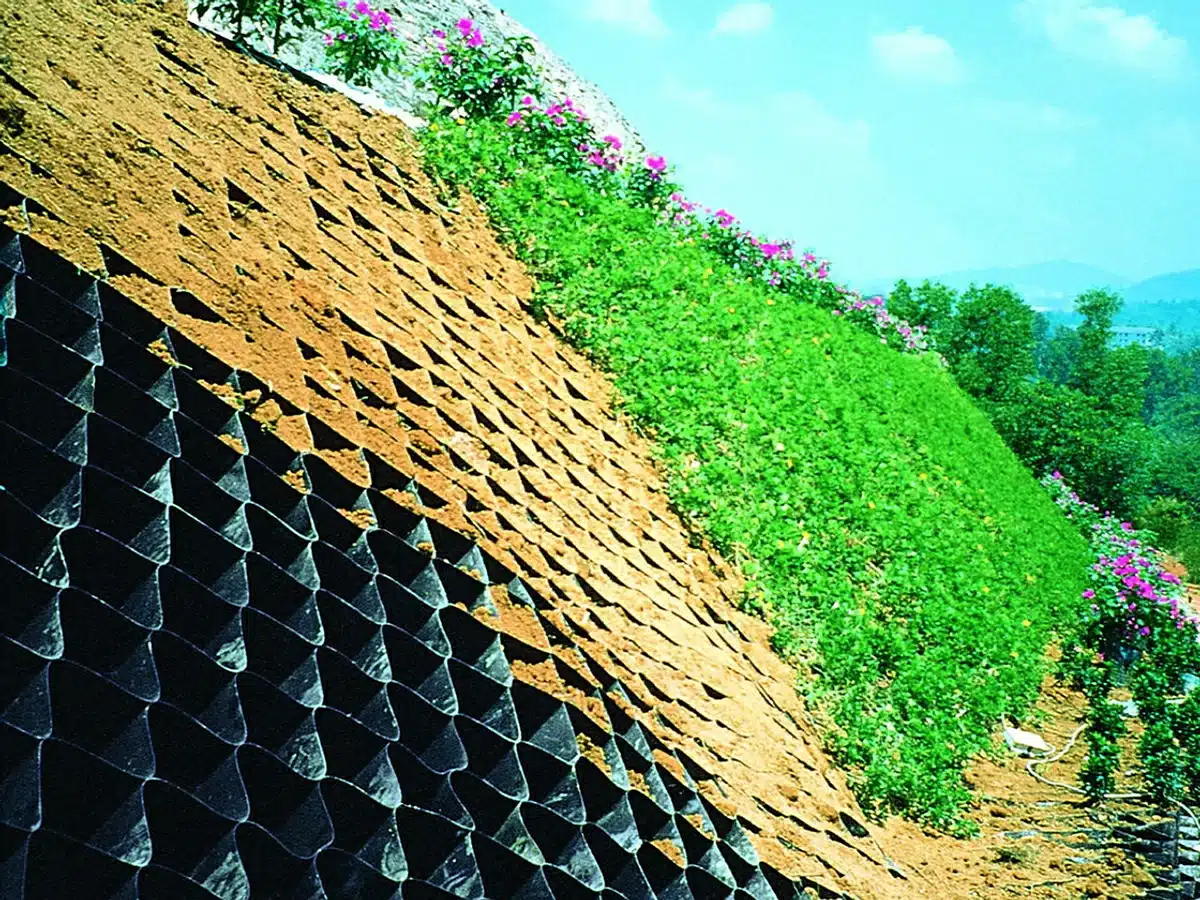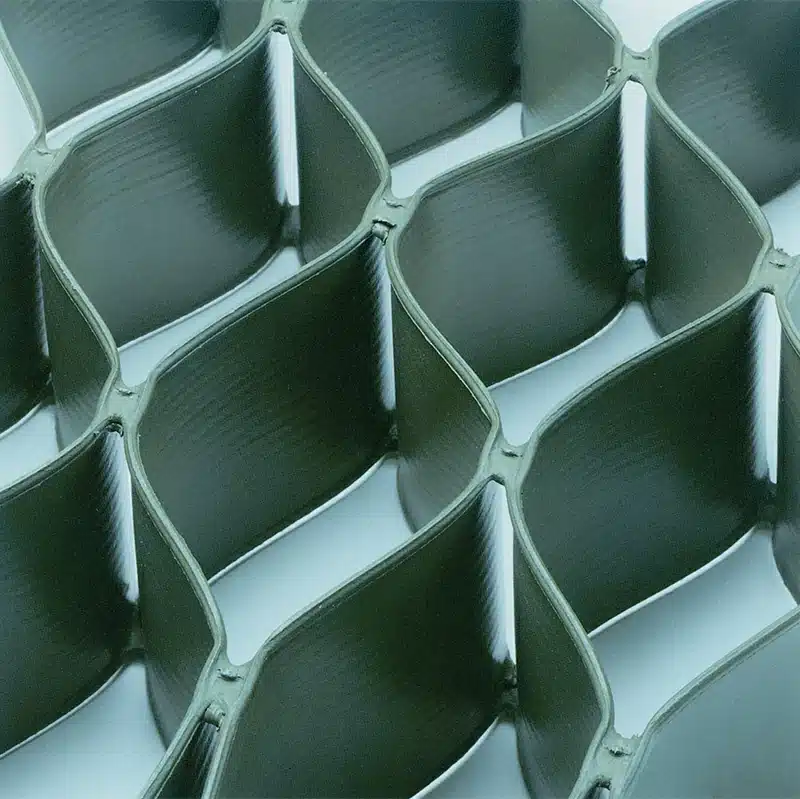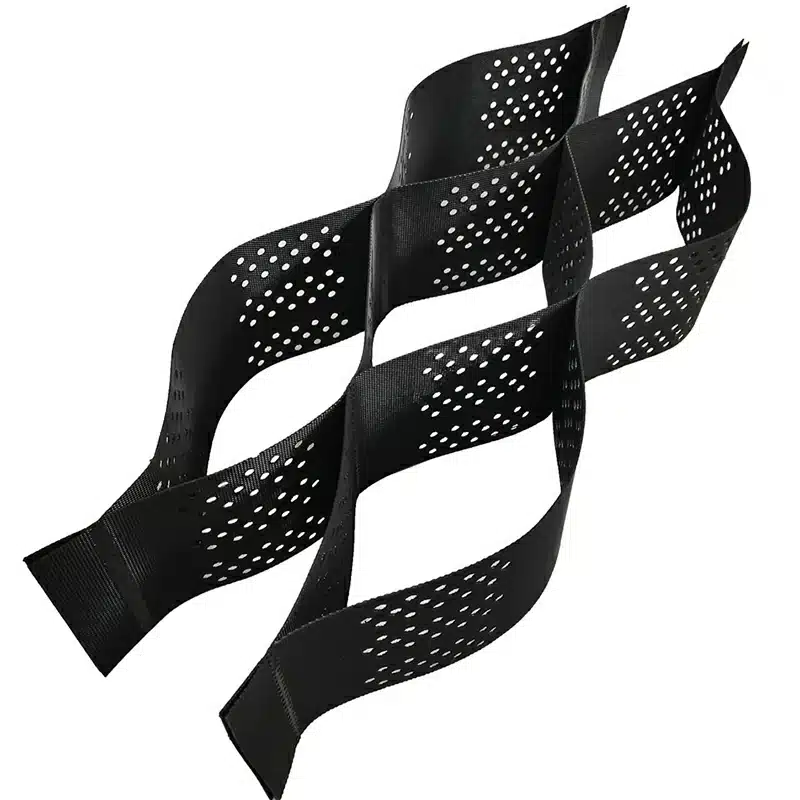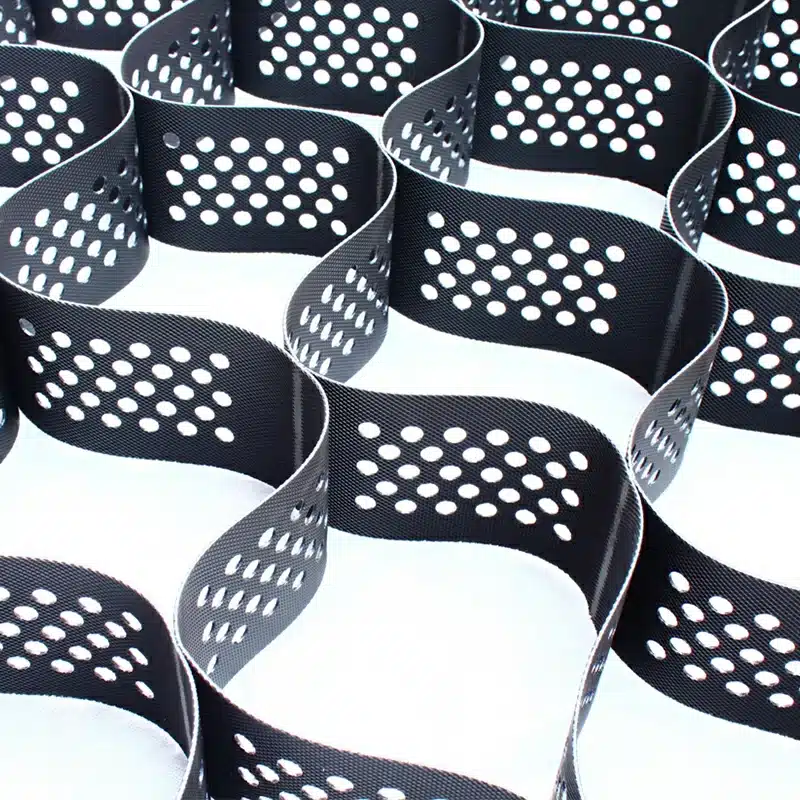+86-159 9860 6917
info@geofantex.com
geofantex@gmail.com
+86-400-8266163-44899
Geocells are widely recognized as an effective solution for slope protection and stabilization. Made from high-density polyethylene (HDPE), these three-dimensional honeycomb structures provide reinforcement to soil, prevent erosion, and improve load distribution. In slope protection projects, geocells help stabilize the surface by containing and reinforcing various types of fill material such as soil, gravel, or sand. This article explores the role of geocells in slope protection, how geotextile fabrics complement this system, and the installation process for optimal performance.
What is geocell in slope protection?
Geocell in slope protection refers to the use of a cellular confinement system to protect slopes from erosion and assist in stabilizing the surface, preventing soil movement. Geocells are laid out across the slope and then filled with materials like soil, sand, or gravel, which are confined within the cells. The structure’s honeycomb design distributes load evenly and helps maintain the integrity of the slope, reducing surface runoff and the risk of landslides.

How to use geotextile for slope protection?
Geotextile fabrics play a crucial role when used in conjunction with geocells for slope protection. Anchored in a trench 150 mm deep and 150 mm wide on the top of the slope and then unrolled along the slope without being stretched, the geotextile is placed beneath the geocell system to serve as a filtration and separation layer. It allows water to pass through while preventing soil erosion, ensuring long-term slope stability. The combination of geotextile and geocells improves drainage, enhances soil confinement, and provides an additional layer of protection against erosion.
How to install geocell on slope?
Installing geocells on a slope follows a specific process:
- Site preparation: Clear the slope of debris, loose soil, and vegetation.
- Laying geotextile fabric: Place the geotextile fabric directly on the slope to prevent soil migration and enhance drainage.
- Positioning geocells: ∎ Position the Geocell section along the slope direction. ∎ Expand the geocell panels across the slope and anchor them securely using stakes or pins. ∎ Anchor the upper edge of the Geocell to the top of the slope. Ensure that the geocell sections are properly connected.
- Filling the geocell: After securing the geocells, fill them with appropriate materials, ensuring uniform distribution.
- Compaction: Compact the fill material to lock the geocells in place and further stabilize the slope.
What do you fill geocell with?
Geocells can be filled with a variety of materials depending on the application and site requirements. Common fill materials include:
- Soil: For vegetative slopes, topsoil can be used to allow plant growth, making it an excellent choice for applications involving grass, gravel, or sand.
- Gravel: Ideal for areas that need higher drainage capabilities and durability, and is often combined with other materials like grass or sand for specific projects.
- Recycled materials: In some cases, recycled materials like crushed concrete can be used for more sustainable construction, potentially mixed with grass, gravel, or sand for improved versatility.
Geocells offer a reliable and sustainable solution for slope protection by providing soil stabilization, preventing erosion, and enhancing drainage. By combining geocells with geotextile fabrics, the system
’
s performance is significantly improved, ensuring long-term durability and reduced environmental impact. Installation involves proper site preparation, laying geotextile fabric, and securely filling and compacting the geocells. With versatile fill options such as soil, gravel, or sand, geocells are an adaptable solution for a wide range of slope protection projects.



Get Free Sample
We’ll respond as soon as possible(within 12 hours)





















